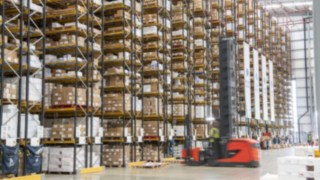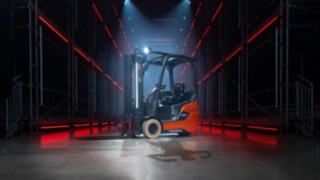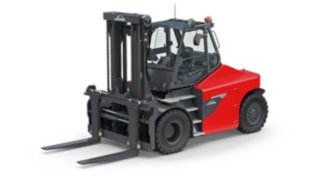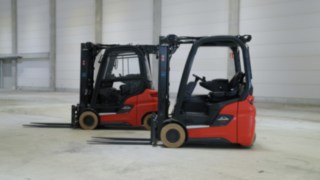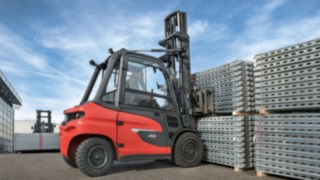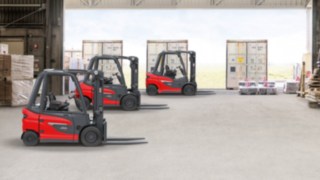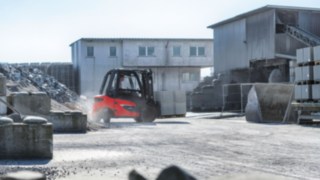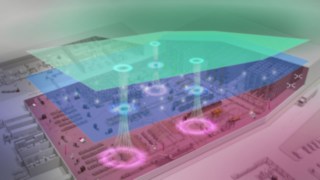
Martin Brickell, Director and Practice Lead for Fulfilment & Physical Logistics at Accenture UK, was recently a panellist on a webinar, hosted by Linde Material Handling, entitled “Putting the AI into intralogistics’. Here he gives his perspectives on the opportunity afforded by AI in this pivotal area of the supply chain.
There are huge opportunities for AI in all areas of intralogistics. However, when considering its application, it’s crucial to understand the difference between the different forms of AI and its distinction from machine learning, as well as where you want to use it in the intralogistics space, whether that be, for example, in the area of warehousing, procurement, production planning or distribution. On top of this you need to approach your plan of action from the perspective of your own operations within the intralogistics environment – there is no one size fits all solution.
Focus on a win, don’t try to do everything
If we take the inside of the warehouse, AI cannot be done in isolation – it involves technology and software and a warehouse management system to deploy it within. Then there is a need for relevant data in a timely fashion. Critically, when putting all the pieces of the AI jigsaw together, those involved in intralogistics operations need to ask themselves “what are we doing and why are we doing it” and focus on a win, not try to do everything. The focus could, for example, be on transport or the pickface.
Focus is key as organisations have to bear in mind that humans within the business have to understand what’s going on with artificial intelligence and/or machine learning to provide the checks and balances. AI also needs to be trained and responsible governance protocols created around it.
Getting the most out of AI is also about who you are and your context as a participant in this area of the supply chain. Different players, for example a manufacturer or a 3PL, will have different needs and maturity levels when it comes to their digital capabilities in their organisations.
Understanding the AI landscape
Knowing the differences between AI and ML, and between AI and Generative AI will equip ‘intra-logisticians’ with the knowledge to understand how the landscape fits together to enable AI’s full potential to be harnessed in the intralogistics environment.
In simple terms:
AI is all about optimisation algorithms using mathematical models for certain inputs to provide optimisation
Machine learning, which is part of AI is where computers learn from data, is all about analysis and prediction. Deep learning is the next level up and focusses on speech and vision (through use of cameras). It is especially good at analysing complex patterns.
Generative AI is language and text-based and understands you and me and can articulate back in pictures, video or words.
The biggest opportunities for AI
As regards areas of significant potential for AI in the intralogistics space, I believe transport optimisation into and out of the warehouse can be a big winner. That’s because with AI and ML there is an opportunity to do mathematical optimisation at far greater scale and speed than traditional transport planners, operators and management systems.
Inside the warehouse I predict the emergence of AI platforms such as Grey Matters, which will disrupt traditional warehouse management systems. Such platforms will have the intelligence to look at areas such as demand and the pickface, and optimise it all. It will also be able to look at forward replenishments by seeing trends in order management.
Other areas where I see AI having a significant impact in intralogistics is in creating a significant step change in risk management, therefore ensuring resilience in operations. Whilst admittedly this AI opportunity is more in reach of the bigger players due to the investment required in infrastructure, such as intelligent control towers, it will enable, for example, communications on the ramifications of delays in shipping goods as a result of a storm in the Southern Pacific to be relayed to relevant supply chain parties and onto the customers. In a similar way, with mathematical models using AI companies can start looking at the impact of any disruptive external forces – from geo-political situations to unforeseen events such as the blockage of the Suez Canal - across its supplier base and work out how to resolve it and the cost it will incur. In this way AI is providing an intelligent understanding of supply chain risks.
The application of AI and ML will also take digital twins to whole new level by having the capability to run a whole load of operational scenarios which will provide deep insights, even down to the conveyor belt speeds and different types of equipment which are failing.
Reskilling the in-flight warehouse workforce
There is a real need for those involved in intralogistics to think carefully about how they bring their own people along with the changing warehousing environment which will be increasingly driven by AI and ML. This represents the majority of the workforce who have 10-20 years behind them and will need reskilling as part of the AI revolution. It is unlikely that further and higher education courses will have the answer for this requirement so businesses will need to lead on the development of programmes that provide the necessary skills to the existing workforce.
AI is for all
Lastly, it’s worth noting that AI doesn’t need to be expensive and therefore doesn’t mean that its emergence will create a divide between those with deep pockets and those that don’t. 3T Logistics’ small bespoke transport platform in the UK is a case in point. It has developed a small transport management application using AI and ML.
Indeed, there are lots of entrepreneurial businesses who are creating new AI solutions that optimise certain aspects of an intralogistics operation such as the pick face, labour management and management of waste. This presents opportunities for all intralogistics providers, regardless of size.
There is no doubt that AI in intralogistics is evolving, growing, driving benefits and is here to stay.

